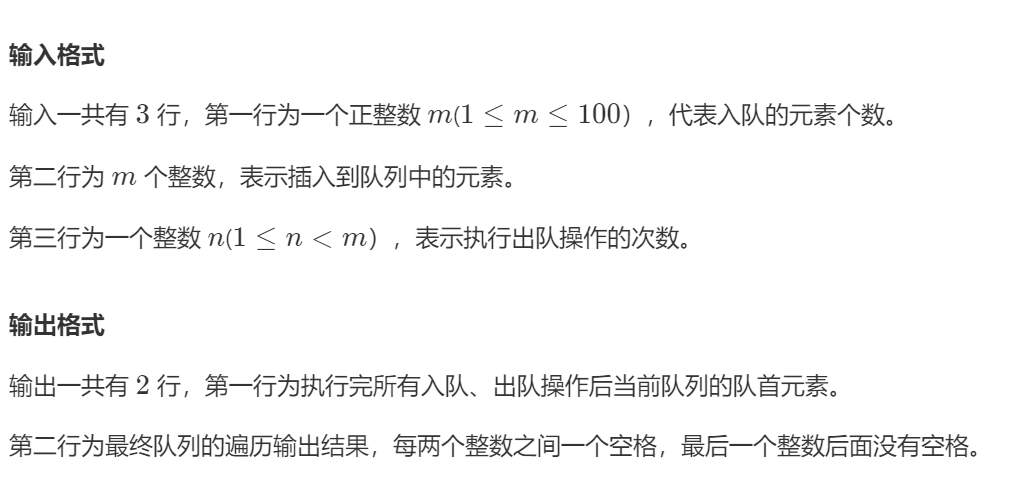
代码如下:
#include <stdio.h>
#include <stdlib.h>
#define ERROR 0
#define OK 1
typedef struct Queue{
int *data;
int head,tail,length;
}Queue;
void init(Queue *q, int length) {
q->data = (int *)malloc(sizeof(int) * length);
q->length = length;
q->head = 0;
q->tail = -1;
}
int push(Queue *q, int element) {
if(q->tail + 1 >= q->length) {
return ERROR;
}
q->tail++;
q->data[q->tail] = element;
return OK;
}
void output(Queue *q) {
for (int i = q->head; i <= q->tail; i++) {
if(i>q->head){
printf(" ");
}
printf("%d", q->data[i]);
}
}
int front(Queue *q) {
return q->data[q->head];
}
void pop(Queue *q) {
q->head++;
}
int empty(Queue *q) {
return q->head>q->tail;
}
void clear(Queue *q) {
free(q->data);
free(q);
}

int main() {
Queue *queue = (Queue *)malloc(sizeof(Queue));
init(queue, 100);
int m,x,n;
scanf("%d",&m);
if(m>=1 && m<=100){
for(int i=1;i<=m;i++){
scanf("%d",&x);
push(queue,x);
}}
scanf("%d",&n);
if(n>=1 && n<m){
for(int i=1;i<=n;i++){
pop(queue);
}
}
if(!empty(queue)){
printf("%d\n",front(queue));
}
output(queue);
clear(queue);
return 0;
}